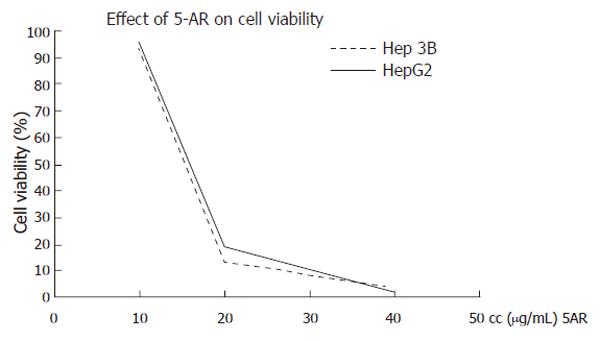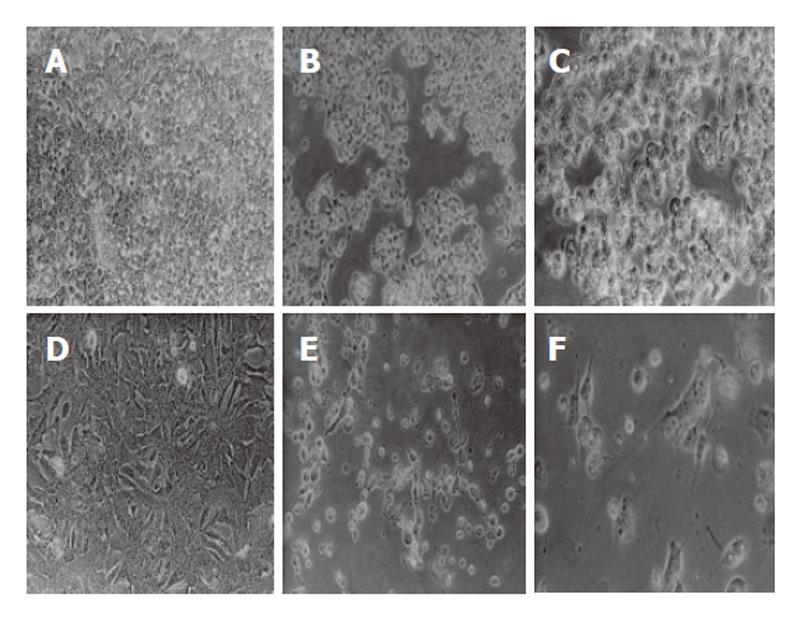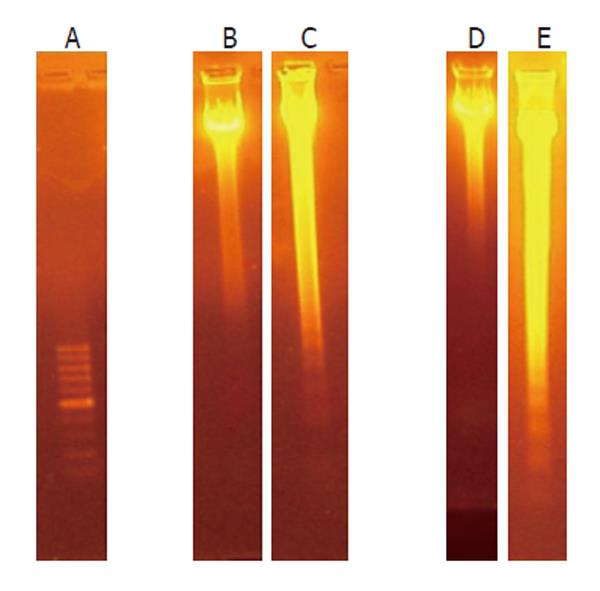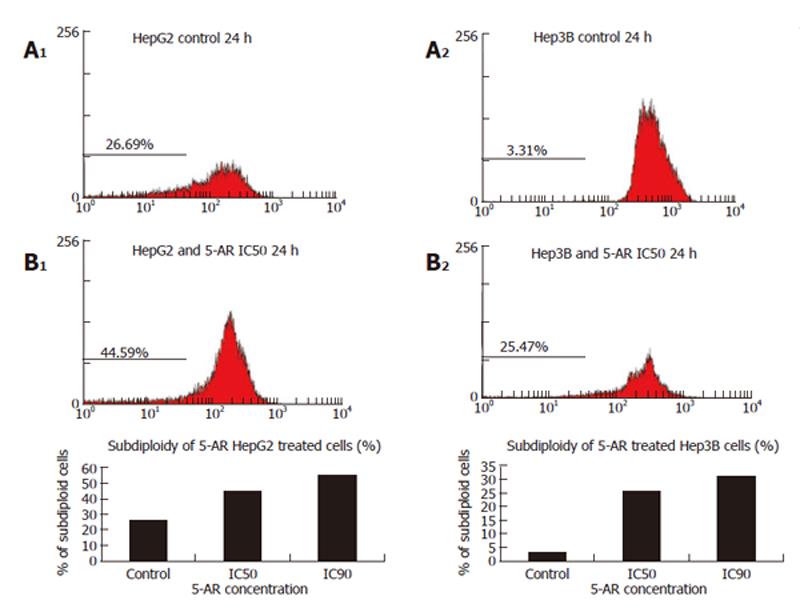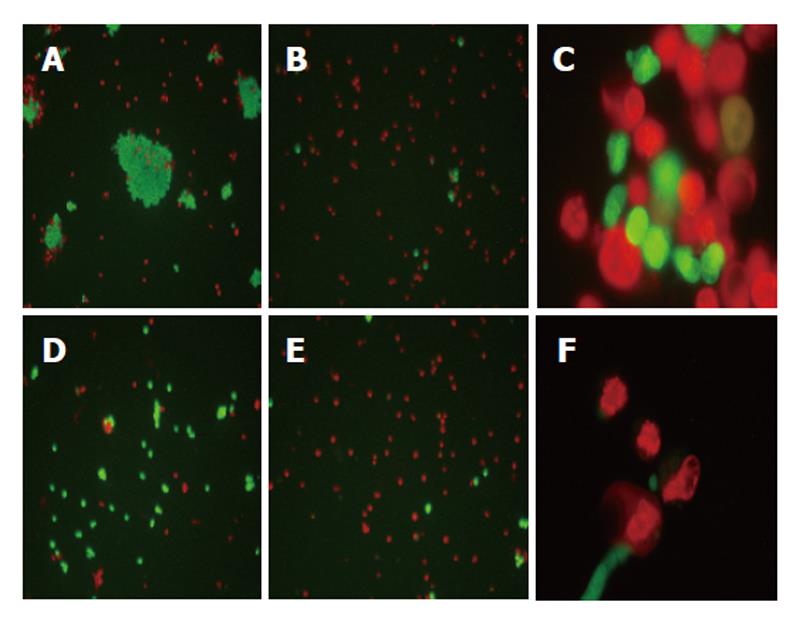Copyright
©2006 Baishideng Publishing Group Co.
World J Gastroenterol. Oct 7, 2006; 12(37): 5959-5963
Published online Oct 7, 2006. doi: 10.3748/wjg.v12.i37.5959
Published online Oct 7, 2006. doi: 10.3748/wjg.v12.i37.5959
Figure 1 Treatment with 5-AR is highly cytotoxic for HepG2 and Hep3B cells.
Cytotoxicity was studied testing cell viability by MTT assay in control or treated cells. The IC50 values for both cell lines were determined by linear regression from dose-response curves.
Figure 2 Treatment with 5-AR induces morphological changes typical of apoptosis in HepG2 and Hep3B cells.
Control or treated cells were observed under contrast phase microscopy and photographed. A: Control untreated HepG2 cells (100 x magnification); B: HepG2 cells treated for 24 h with 5-AR IC50 (100 x magnification); C: HepG2 cells treated for 24 h with 5-AR IC50 (200 x magnification); D: control untreated Hep3B cells (100 x magnification); E: Hep3B cells treated for 24 h with 5-AR IC50 (100 x magnification); F: Hep3B cells treated for 24 h with 5-AR IC50 (200 x magnification). Results are from one experiment that is representative of three similar ones.
Figure 3 Treatment of HepG2 and Hep3B cells with 5-AR induces the DNA laddering typical of apoptosis.
DNA was extracted from control or treated cells and electrophoresed on an agarose gel. Lane A: molecular marker; lane B: control untreated HepG2 cells; lane C: HepG2 cells treated for 24 h with 5-AR IC50; lane D: control untreated Hep3B cells; lane E: Hep3B cells treated for 24 h with 5-AR IC50. Results are from one experiment that is representative of three similar ones.
Figure 4 5-AR-treated HepG2 and Hep3B cells showing a subG0 population detected by flow cytometry.
Treated or control cells were stained with propidium iodide and analyzed by flow cytometry. Left: (A1) control untreated HepG2 cells, (B1) HepG2 cells treated for 24 h with 5-AR IC50; Right: (A2) control untreated Hep3B cells, (B2) Hep3B cells treated for 24 h with 5-AR IC50. Results are from one experiment that is representative of three similar ones.
Figure 5 Treatment with 5-AR induces nuclear condensation and fragmentation in HepG2 and Hep3B cells.
Cells were stained with acridine orange and propidium iodide, and observed under fluorescent microscopy. A: Control HepG2 cells (100 x magnification); B: treated HepG2 cells (100 x magnification); C: treated HepG2 cells (200 x magnification), showing in detail morphological changes of nuclear chromatin; D: control Hep3B cells (100 x magnification); E: treated Hep3B cells (100 x magnification); F: treated Hep3B cells (200 x magnification). Results are from one experiment that is representative of three similar ones.
- Citation: Barbini L, Lopez P, Ruffa J, Martino V, Ferraro G, Campos R, Cavallaro L. Induction of apoptosis on human hepatocarcinoma cell lines by an alkyl resorcinol isolated from Lithraea molleoides. World J Gastroenterol 2006; 12(37): 5959-5963
- URL: https://www.wjgnet.com/1007-9327/full/v12/i37/5959.htm
- DOI: https://dx.doi.org/10.3748/wjg.v12.i37.5959









